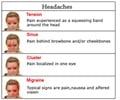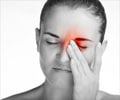Migraine Awareness Week is an annual campaign that will be observed from 6 to 12 September in 2015 to draw attention to migraine. Every year, migraine awareness week is observed to educate the public on the seriousness of the condition and reduce its stigma. This year, the focus of Migraine Awareness Week will be on young people.
Migraine is a neurological condition with no known cause or cure. Women are more prone to suffer a migraine than men, and it can affect people from all age groups. It often starts in childhood and many people suffer from migraine throughout their life. It also has a negative impact on their family, work and social lives.Migraine is more prevalent than diabetes, epilepsy and asthma, as it affects one out of seven people. The World Health Organization (WHO) defines migraine as one of the most disabling lifetime conditions yet awareness and understanding of the condition is low.
Migraine affects people in different ways, but it is often mistaken for other conditions. The main symptom of migraine is a painful headache, often on one side of the head. However, it can affect the whole body and can result in many symptoms, sometimes without a headache at all.
There are other associated symptoms that can occur with or without a headache, such as nausea, vomiting, diarrhea, increased sensitivity to light, sound and smell. Some of the neurological symptoms include, blind spots, distorted vision, flashing lights or zigzag patterns. Other common symptoms are dizziness, vertigo, inability to concentrate, confusion and difficulty in speaking.
During various episodes of a migraine attack, the symptoms can vary from person to person. A migraine attack can normally last between 4 and 72 hours.
There is no clear diagnostic test or cure for migraine. Diagnosis depends on the history and patterns of migraine attacks. However, there are many ways to manage the condition and ultimately reduce the disruption caused to everyday life.
Common Triggers of Migraine
Migraine is often triggered by a factor or a combination of several factors. It may be an environmental or emotional event. The common triggers of migraine are dehydration, bright and flashing lights, skipping breakfast, caffeinated beverages, lack of sleep, excitement, stress, smoking, menstruation, changes in hormone levels, travel, spending more time in front of television or computer and lack of physical activity. It is important to identify the triggers as it can be beneficial to make some changes to help prevent a migraine.Migraine in Children and Young Adults
Migraine can affect even very young children. It is widespread among children and young adults. A migraine affects 2% of five-year-old children and 18% of 15 to 18 year-olds. Migraine is inherited from a parent. It occurs because of the alterations in an individual’s genetic makeup.Migraine in children and young adults can often go undiagnosed and untreated, which can have a negative impact in terms of well-being and education. The duration of migraine attack is often shorter in children and young adults, which could be due to triggers like anxiety, exams, stress and excitement.
A migraine may begin at the age of five and at 10 to 12 years, but is seen to be more common in girls, who experience their first attack around puberty.
Treating Migraine without Medication
There is no cure for migraine, but there are different treatments available to help prevent migraine and limit their effects. Treatment for migraine depends on factors such as age, medical history, frequency and severity of attacks.Sometimes children and young adults do not need medications to treat a migraine. Non-medication treatments can provide added benefits. During an episode of migraine attack, a child should be allowed to sleep in a quiet and cool room.
Stress management and relaxation techniques have proved to be beneficial during a migraine attack and to alleviate stress before it triggers an attack. Relaxation techniques such as breathing exercises, mental imaginary relaxation or relaxation to music are effective in alleviating a migraine attack. Regular physical activity is also important to prevent migraine attacks.
Another technique is called as biofeedback, where painless sensors are connected to the body to monitor changes in several physical functions, such as muscle tension, heart rate and blood pressure. A biofeedback therapist helps a child to recognize the signs of tension and teaches the physical skills to release and control the tension.
Treating Migraine with Medication
Several types of medications are available to alleviate the symptoms of migraine. Analgesics, such as acetaminophen or ibuprofen are pain relievers for treatment of headaches in children and young adults. Children, who do not find analgesics helpful, can be benefited with Triptans.Doctors may also prescribe antiemetics to stop nausea and vomiting to help a child rest. Children and young adults, who experience migraine attacks more than twice a week, may be prescribed a daily medicine to prevent headaches.
References:
1. http://www.migrainetrust.org2. http://www.migrainetrust.org/event-migraine-awareness-week-2015-19532
3. http://www.migraine.org.uk/professionals/migraine-awareness-week/
4. http://kidshealth.org/teen/diseases_conditions/brain_nervous/migraines.html
Source-Medindia













